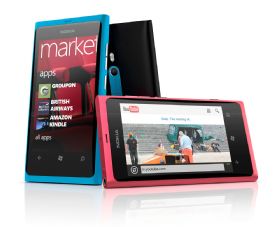With the launch of the Lumia 710 and Lumia 800 Windows 7.5 smart phones, Nokia is boldly going into uncharted territory.
After correctly identifying the fact that Symbian could no longer cut it at the sharp end of smart phone technology, Nokia looked around to see what else was out there. The obvious answer was Android, but the truth is that Samsung and HTC already have a more or less unassailable lead in that market, both at the mid and the high end.
However, the situation was complicated by the fact that Nokia had learned the hard way that taking on development of an operating system (OS) itself was not the answer, as it found to its cost with Symbian, but also with its involvement in MeeGo.
So the obvious answer was an OS for which Nokia would not have to be the spearhead, but rather a supporting manufacturer. Under these criteria there was only one answer, Windows Phone.
Windows Phone 7 (WP7) bears almost no relation to Windows Phone 6.5, its predecessor, and that is good. Windows Phone 6.5 had outlived its usefulness by a number of years and despite certain manufacturers soldiering on with it, namely HTC, it was a dead end. Microsoft dug deep for WP7 and the result was surprising.
WP7 is good, very good. It looks different and slick, and that is a good thing-just ask Samsung!
However, Nokia still has a struggle on its hands as its timing is a little unfortunate.
HTC, Samsung and LG had all been on the band wagon for WP7, and produced good devices to support the new OS. That said, it did not fly off the shelves for any of the manufacturers and so the Windows Phone 7.5 update, codenamed Mango, was highly anticipated for its 500 plus new features and enhancements.
But despite a gargantuan effort by Nokia to have a smart phone ready for general availability of WP7.5, it was beaten to market by some of the existing WP manufacturers. This meant that the arrival of the Lumia models was somewhat upstaged by existing WP 7.5 optimised handsets. This has left the Nokias to rely on other differentiators to lift them above the likes of the HTC Titan and Radar.
But, are there any differentiators that will bring about this effect?
Not many, according to John Delaney, research director, European Consumer Mobile, IDC. Delaney points out that certain apart from Nokia strongpoints in hardware, such as overall build and camera quality, and Nokia Maps, which is a fusion of a few services from acquisitions and in-house, there are not many things to lift the Lumias out of the line-up. HTC and Samsung have established their own credentials in terms of build quality, with HTC’s unibody designs and Samsung’s Galaxy series, and their respective overlays for Android both offer something a bit different. Few would regard the Lumias as iPhone or Android killers.
WP 7.5 still maintains a fairly tight rein on what can be done as regards look and feel, so Nokia is limited in what it can do in this respect. Having not had a hands-on with a Lumia yet, it is hard to say how different the Nokia treatment has been from other manufacturers.
Delany points out that WP 7.5’s social media integration, customisable live tiles and its HTML5 compatible browsing will be good selling points, but again these are all advantages enjoyed by any WP 7.5 phone, bearing in mind too that all WP7 devices can be easily updated to the 7.5 version.
He then goes on to say that Nokia’s own music service may be a draw, but again it competes with the in-built Zune music services which may have an advantage as the Zune application is used to manage content on the WP devices.
With all that said, a recent picture on the Irish Times showed Taoiseach Enda Kenny entering a meeting of the European Union on the euro crisis, and as he waved to the assembled press, in his right hand was Nokia 6310i-a venerable handset from Nokia’s glory days. This handset demonstrates the loyalty some still have to the Nokia brand, especially among business users who may also carry a Blackberry or the like, but use the Nokia to make calls. And this may be Nokia’s saving grace.
Among business users, a Nokia smart phone, that does things as basic as makes calls reliably, each and every time, without worrying about how you hold it or in which hand, is still an attractive prospect. When you throw in the fact that many may have flirted with Android or iOS and found them wanting because the devices were not good phones, you suddenly have a receptive market.
But the icing on the cake may be Windows Phone 7.5’s Office capabilities. The fact the you have fully working, and free, Microsoft Office suite on every device that gives easy integration with SkyDrive and Office365, suddenly gives the differentiator that just might lift Nokia back up the rankings in smart phone sales, ironically though, not among consumers, but among business users.
When reliability is paramount, many things go out the window. When an Taoiseach inadvertently brandished his Nokia phone, he was encapsulating how a lot of people from the private and public sectors still feel about Nokia phones-they work. When the seduction of an iPhone is lost to such concerns and you don’t really care about Facebook in your pocket, but would like to be able to have your Office documents in your pocket without losing call quality, then a Nokia running Windows may be the answer.









Subscribers 0
Fans 0
Followers 0
Followers